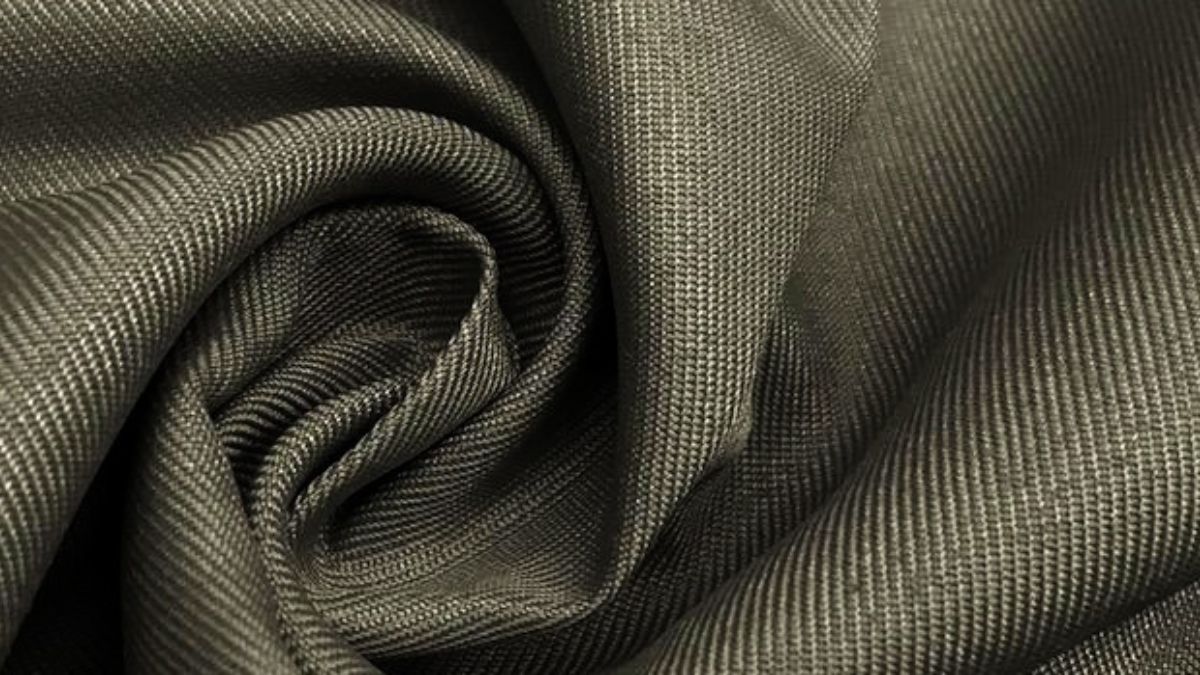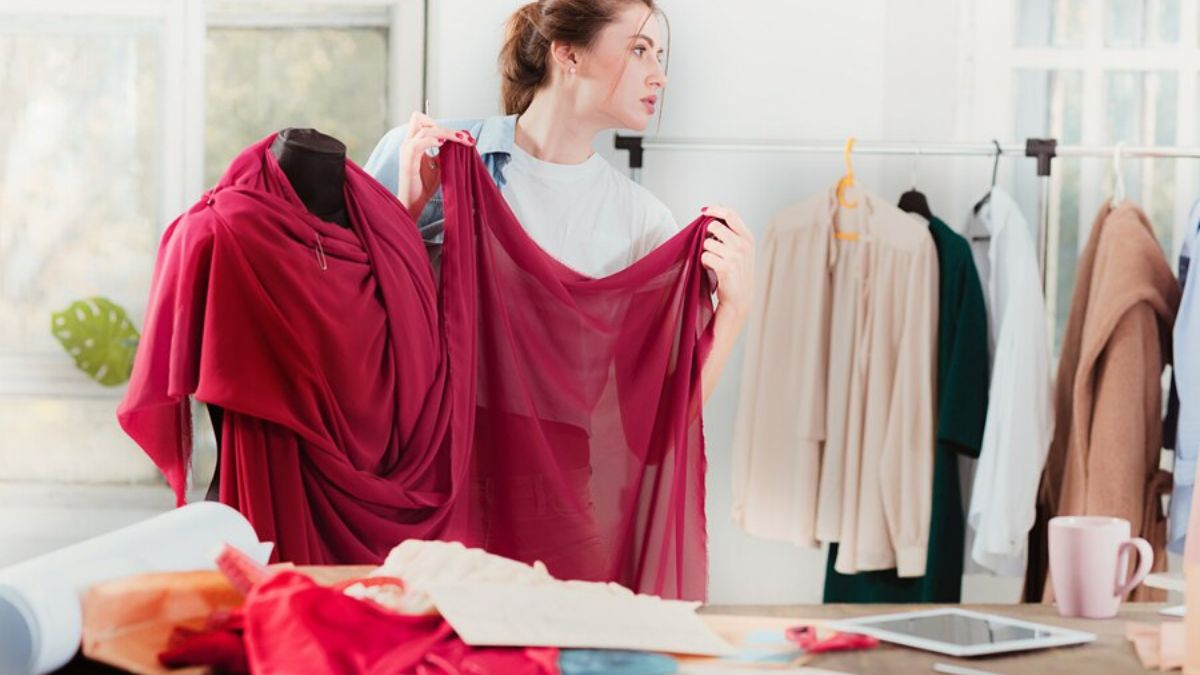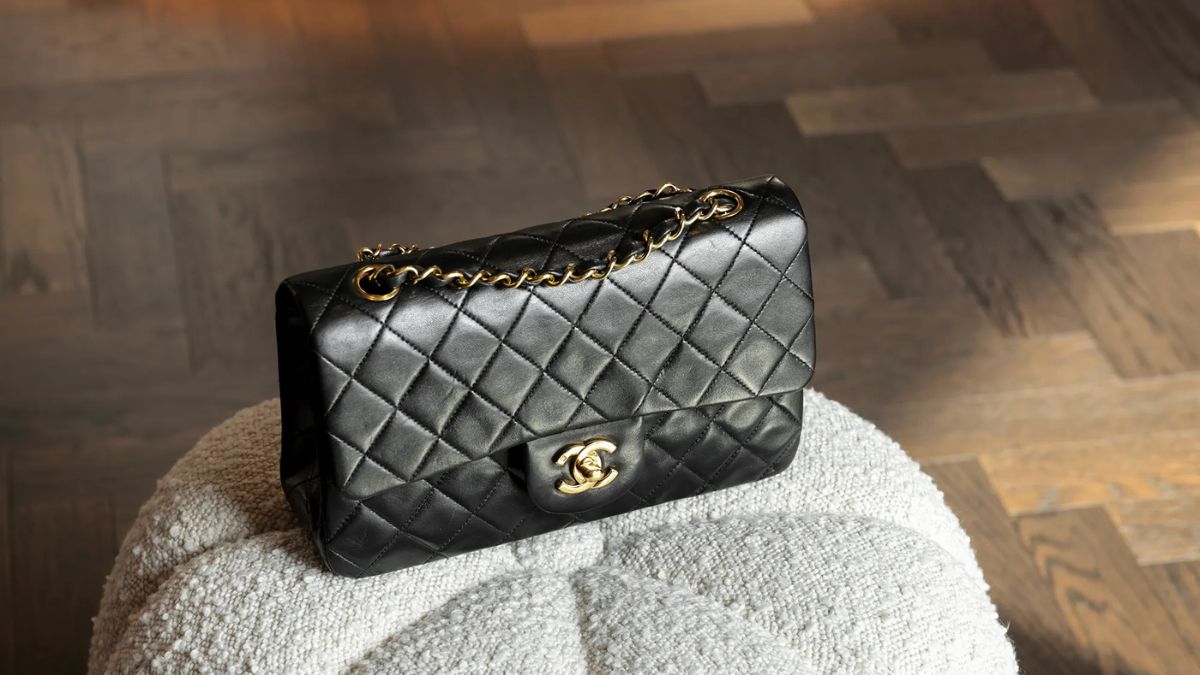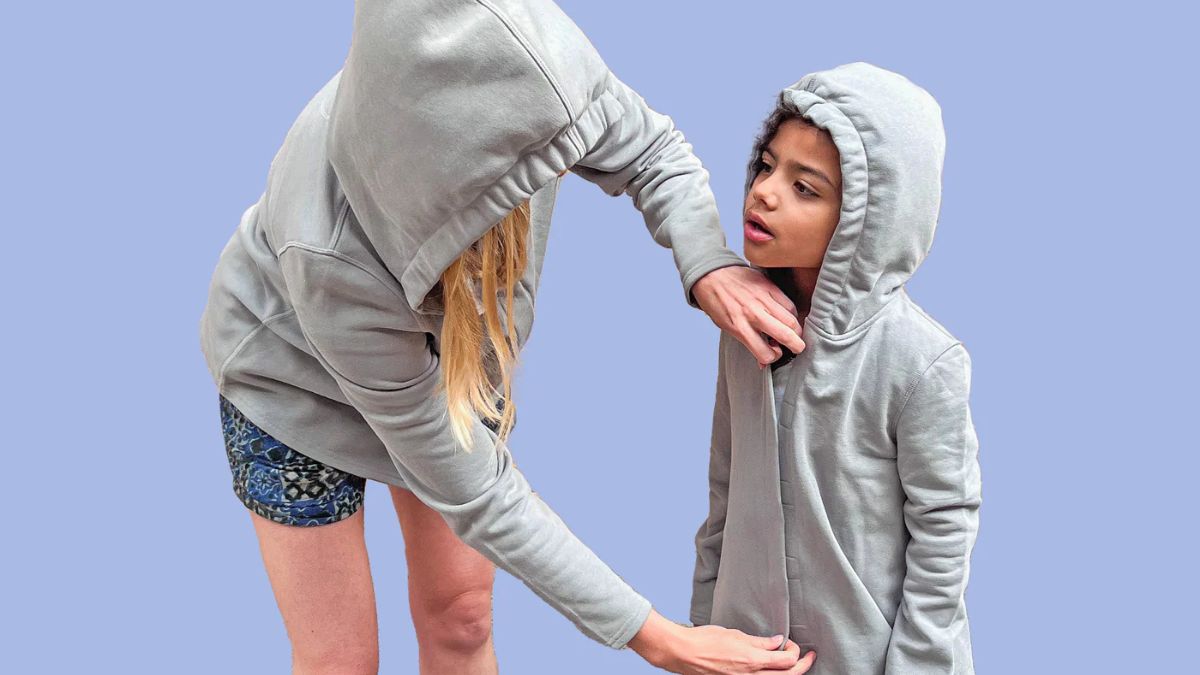FASHION
Twill vs. Other Weaves: What Sets It Apart?

Twill fabric has been a staple in the textile world for centuries, and its unique weave sets it apart from other materials. Whether you’re an avid sewer, a fashion enthusiast, or simply someone who appreciates quality fabrics, understanding twill is essential. This versatile weave offers both durability and elegance, making it perfect for various applications. From stylish clothing to chic home decor items, twill continues to capture attention with its rich texture and distinctive diagonal pattern. Let’s dive deeper into what makes twill so special and how it compares to other weaves in the market today!
History and Origin of Twill Weave
Twill weave has a rich history that dates back thousands of years. Its origins can be traced to ancient civilizations, where artisans began experimenting with different weaving techniques. The earliest records show twill being used in textiles from regions like the Middle East and Asia.
As time progressed, this technique spread across Europe during the Middle Ages. It became particularly popular for its durability and aesthetic appeal. Twill fabrics were often favored by nobility for clothing and home textiles.
The distinctive diagonal pattern created by twill made it stand out among other weaves. This unique design not only added depth but also enhanced fabric strength.
Through centuries of evolution, twill has remained relevant in both fashion and functional textiles. Today, it’s celebrated for its versatility across various applications—from denim jeans to elegant upholstery fabrics.
Characteristics and Features of Twill Weave
Twill weave is recognized for its distinctive diagonal pattern, which sets it apart from other fabric types. This unique structure creates a texture that’s not only visually appealing but also adds depth to the material.
The strength of twill comes from this interlacing technique, making it more durable than plain weaves. Fabrics made with twill often resist wrinkles and creases better, offering longevity in wear.
Another notable characteristic is its drape. Twill has a fluidity that enhances how garments fit and flow on the body. This quality makes it popular in both casual and formal attire.
Additionally, twill can be crafted from various fibers including cotton, wool, or synthetic materials. Each fiber brings its own set of qualities to the table while retaining the fundamental traits of the weave itself.
Comparison with Other Weaves (Plain, Satin, Dobby)
Twill weave stands out when compared to other weaving techniques. Plain weave, for instance, is the simplest form of weaving. It produces a flat and uniform texture but lacks the depth and visual interest that twill offers.
Satin weave, on the other hand, creates a glossy surface with fewer interlacings. This results in stunning drapes and luster but can be less durable than twill. Satin tends to snag easily due to its smooth finish.
Dobby fabric introduces patterns through extra warp or weft threads. While it can create intricate designs, it often lacks the structural integrity found in twill fabrics. Twill’s diagonal patterning not only enhances aesthetics but also contributes to strength.
Each technique has its unique appeal, yet twill consistently proves itself as versatile and robust across various applications.
Advantages and Disadvantages of Twill Weave
Twill weave has distinct advantages that make it a popular choice. Its diagonal pattern creates a durable fabric, which resists wear and tear effectively. This makes twill ideal for items like jeans and workwear.
The texture of twill is another plus. It offers a soft feel while maintaining structure, making it comfortable to wear or use in home decor.
On the flip side, there are some disadvantages to consider. Twill can be more challenging to dye evenly due to its intricate weaving process. This may affect color consistency in finished products.
Additionally, because of its thickness, twill fabrics can be heavier than other weaves like plain or satin. This might not suit all applications where lightweight materials are preferred. Balancing these factors is essential when choosing twill for specific projects.
Popular Uses of Twill Weave in Fashion and Home Decor
Twill weave is a favorite in the fashion industry. Its distinctive diagonal pattern adds texture and depth to garments. You’ll often find twill in denim jeans, giving them durability while maintaining style.
In outerwear, twill offers a structured look that is both chic and practical. Jackets made from this fabric can withstand wear and tear, making them perfect for everyday use.
Home decor also benefits from twill’s versatility. It’s commonly used for upholstery, curtains, and cushions. The fabric holds its shape well while providing comfort.
Additionally, twill fabrics come in various weights and colors, allowing homeowners to play with design aesthetics effortlessly. Whether it’s an elegant dining room chair or casual throw pillows on a sofa, twill enhances any space beautifully.
Its ability to resist wrinkles makes it ideal for busy lifestyles too—perfect for those who appreciate low-maintenance textiles without sacrificing elegance.
How to Care for Twill Fabric
Caring for twill fabric is essential to maintain its beauty and durability. Start by checking the care label for specific washing instructions.
Most twill fabrics can be machine washed in cold water on a gentle cycle. Use a mild detergent to avoid damaging the fibers.
If you’re worried about shrinkage, hand washing might be the safer option. Rinse thoroughly and do not wring out the fabric; instead, gently press it between towels to remove excess water.
For drying, air-drying is ideal. Hang your garment or lay it flat to prevent stretching. If you need to use a dryer, choose a low heat setting.
When ironing, set your iron on medium heat with steam if necessary. Always test a small area first to ensure no damage occurs.
Regularly check for stains and address them promptly using appropriate stain removers designed for delicate fabrics.
Conclusion: Why You Should Consider Using Twill for Your Next Project
Twill fabric stands out for its distinctive diagonal weave, offering a unique texture and durability that many other weaves simply cannot match. Its rich history adds to its appeal, with origins dating back centuries across various cultures. The characteristics of twill—such as its strength and ability to drape beautifully—make it an excellent choice for a wide range of applications.
Comparing twill with plain, satin, and dobby weaves reveals the strengths of each type while highlighting what makes twill special. While it may have some disadvantages, like being prone to wrinkles or requiring more care than simpler weaves, its advantages often outweigh these concerns.
In fashion and home decor, the versatility of twill shines through. From stylish jackets to elegant upholstery fabrics, this weave can elevate any project you undertake. Plus, caring for twill is straightforward once you understand the best practices.
Choosing twill means opting for quality and flair in your creations. Whether it’s clothing or home textiles you’re considering using it for, this exceptional weave offers numerous benefits worth exploring further on your next crafting adventure.
FASHION
How Fashionisk.com is Revolutionizing the Way We Dress

In a world where fashion often feels unattainable, Fashionisk.com is stepping in to bridge the gap between style and accessibility. This innovative platform is on a mission to redefine how we approach our wardrobes, offering solutions that resonate with today’s modern lifestyle. With an emphasis on personalization and sustainability, Fashionisk.com isn’t just another online shopping destination—it’s a game changer poised to transform the way we think about clothing. Say goodbye to cookie-cutter styles and hello to a tailored experience that meets your unique fashion desires!
The Problem with Traditional Fashion Industry
The traditional fashion industry is often criticized for its lack of inclusivity. Many brands focus on a narrow range of body types, leaving countless individuals feeling excluded. This approach not only alienates consumers but also stifles creativity and diversity in design.
Additionally, fast fashion has created a cycle of overconsumption and waste. With trends changing rapidly, many clothing items are discarded after just a few wears. The environmental impact is staggering—landfills overflow with discarded garments while resources are depleted at an alarming rate.
Moreover, the reliance on outsourcing can lead to unethical labor practices. Workers in developing countries often face poor working conditions and minimal pay. This dark side of the industry raises questions about responsibility and accountability among major brands.
These issues highlight the urgent need for change within the fashion landscape—a change that Fashionisk.com aims to address head-on through innovation and transparency.
How Fashionisk.com is Changing the Game
Fashionisk.com is redefining the shopping experience by leveraging cutting-edge technology. This platform empowers users to discover styles that resonate with their personal tastes, making fashion accessible for everyone.
Unlike traditional retail models, Fashionisk.com curates personalized recommendations based on individual preferences. Users simply input their style inspirations, and the algorithm works its magic.
Moreover, this site fosters a community of fashion enthusiasts. It encourages sharing looks and gaining inspiration from others, creating an interactive space where creativity thrives.
The seamless integration of social networking elements transforms how we view clothing choices. No longer just about purchasing items; it’s about connecting through shared passion.
With its intuitive interface and unique approach to curation, Fashionisk.com stands out in a crowded market. It champions individuality while promoting sustainable practices through mindful consumption choices.
Innovative Features and Technology Used by Fashionisk.com
Fashionisk.com is at the forefront of integrating advanced technology into everyday fashion. One standout feature is its AI-driven style recommendations. Users receive personalized outfit suggestions based on their preferences and body type, making shopping a breeze.
The platform also employs augmented reality (AR) to enhance the virtual try-on experience. This allows customers to see how clothing fits without ever leaving home, reducing uncertainty in online shopping.
Additionally, Fashionisk.com harnesses data analytics to track trends and consumer behavior. This insight enables rapid adaptation to market demands while ensuring that users find exactly what they’re looking for.
Moreover, community engagement tools foster collaboration among users. They can share looks and get feedback from peers, creating an interactive fashion ecosystem unlike any other. Each innovative feature works together seamlessly, enhancing user experience while revolutionizing how we approach fashion today.
Impact on Sustainability and Ethical Practices in Fashion
Fashionisk.com is not just about style; it champions sustainability and ethical practices. The platform prioritizes eco-friendly materials, reducing waste by promoting a circular fashion model. Users can access an array of sustainable brands committed to making a difference.
By connecting conscious consumers with responsible designers, Fashionisk.com fosters transparency in the industry. This empowers shoppers to make informed choices that align with their values.
In addition, the site actively supports fair trade practices. Designers featured on Fashionisk.com ensure workers receive fair wages and safe working conditions. This commitment enhances community well-being around the globe.
Furthermore, innovative technologies help minimize environmental impact. From virtual fitting rooms to second-hand markets, every feature promotes smarter consumption habits among users while encouraging less reliance on fast fashion trends.
Success Stories of Fashionisk Users
Fashionisk.com has empowered countless users to redefine their style. Take Sarah, for instance. She was overwhelmed by the chaos of fast fashion but found clarity through Fashionisk’s curated collections. With personalized recommendations, she discovered pieces that truly resonated with her aesthetic.
Then there’s James, a professional who struggled with his wardrobe choices. He turned to Fashionisk and quickly learned how to mix and match items effortlessly. The platform helped him transform from a corporate clone into an individual with flair.
Another inspiring story comes from Mia, an eco-conscious shopper. By using Fashionisk.com, she not only upgraded her closet but also supported sustainable brands. Her wardrobe now reflects her values while keeping her stylish.
These testimonials illustrate just how impactful Fashionisk.com can be in tailoring personal experiences that resonate beyond mere clothing choices.
The Future of Fashionisk.com and the Revolution it’s Bringing
Fashionisk.com is poised to redefine the fashion landscape. With its cutting-edge approach, the platform is set to create a more personalized shopping experience.
Imagine a world where your wardrobe evolves alongside you. Fashionisk.com aims to make that vision a reality. Through advanced algorithms and user-driven insights, it will tailor recommendations based on individual styles and preferences.
The integration of augmented reality could allow users to virtually try on outfits before making purchases. This technology promises not only convenience but also confidence in decision-making.
As trends shift towards inclusivity and diversity, Fashionisk.com champions these values by showcasing a broad spectrum of designers and styles. The future looks bright as more voices enter the conversation about what fashion should represent.
In this rapidly changing environment, adaptability will be key for Fashionisk.com as it continues to innovate while staying true to its mission of empowering consumers through style choices.
Conclusion
Fashionisk.com is more than just a website; it’s a movement that aims to reshape the way we perceive and engage with fashion. With a fresh approach, it tackles the shortcomings of traditional fashion by emphasizing inclusivity, sustainability, and technology. This innovative platform empowers users to express their personal style without compromising on ethical standards.
The integration of cutting-edge technology offers an unprecedented shopping experience. AI-driven recommendations help users find outfits tailored to their preferences while promoting brands committed to sustainable practices. As consumers become increasingly aware of their choices’ impact on the environment, Fashionisk.com stands out as an ally in this journey.
Success stories from satisfied users highlight how Fashionisk.com has transformed lives through personalized styling solutions and access to ethically made clothing options. Each success story reflects a community united by shared values—style infused with consciousness.
Looking ahead, Fashionisk.com is poised for even greater strides in revolutionizing fashion retailing. Its commitment to innovation coupled with its focus on sustainability ensures that it will continue leading the charge towards responsible consumerism in the industry.
By embracing change and redefining norms, Fashionisk.com paves the way for future generations who value both aesthetics and ethics in their wardrobe choices. The evolution of our dressing habits is underway—one stylish choice at a time.
FASHION
Chanel Lambskin: The Ultimate Guide to Luxury Handbags

What Makes the Chanel Lambskin Bag So Special?
Understanding Lambskin Leather
Lambskin leather maintains its delicate touch, exquisite softness, and luxurious texture. One can feel this material’s glory on Chanel handbags made from lambskin. It is pulled from the skin of younger sheep, and the processing steps on it are kept to a minimum so that the soft feel and natural lamb skin look are maintained. The outcome is a smooth, supple texture that is sophisticated yet classy. Lambskin is softer compared to other leathers, which means it is more prone to scratches, so attentive and delicate care is a must.
View Chanel Lambskin – LuxuryEvermore details to get into the details.
Comparison, Chanel Caviar Leather
The caviar leather works well with rugged day-to-day use. Unlike brawny caviar, lambskin is softer and prone to scratches yet exudes effortless elegance. Its superb finish makes it a hand-on choice for formal events. While Chanel enthusiasts appreciate the luxurious feel of lambskin, it provides options for those with differing lifestyles. In contrast, caviar offers a practical choice at the cost of lower elegance. The articulation in the two side-by-side comparisons of Chanel’s caviar and lambskin leather unveils the preferences of the targeted customers.
Characteristics of a Chanel Lambskin Bag
A Chanel lambskin bag molds to the hand, as the soft leather feels luxurious to the touch. Smooth and silky to the touch, a lambskin is the channel hallmark, while the precise stitching, iconic quilting, and interlocking CC logo bear its fine craftsmanship. Despite being the most delicate of leathers, it is still designed to last a lifetime, aka “Chronos,” which is timeless and maintained. Essentials like nylon, raingear, or swimwear truly put the classic and seasonal colors on display, providing complementing versatility that styles to both traditional and modern wardrobes.
How to Choose the Perfect Chanel Lambskin Handbag?
Popular Styles: Flap Bags and Top Handle
Chanel’s Lambskin handbags are famous for their signature designs, which include the most popular Flap Bags and top-handle handbags. Flap Bags exemplify ageless beauty and possess the trademark quilted pattern with an interlocking CC clasp. Their portability in multiple sizes makes them suitable for numerous purposes. On the other hand, Top Handle bags have a modern yet timeless look and are created for ease of use without losing the brand’s prestige. It is no wonder that most people prefer the Top Handle as it has a defined shape that makes it more sophisticated and easier to use at the same time.
Size Guide: Small Flap Bag and Jumbo Single Flap
Picking the correct size for a Chanel Lambskin handbag is very important in terms of practicality and style. For frequent travelers, the Small Flap Bag is perfect as it can fit a wallet, phone, and makeup, which makes it ideal for evenings and casual outings. In contrast, the Jumbo Single Flap bag is one of the most spacious bags offered by Chanel, capturing the essence of the brand’s elegance and still having enough room for day-to-day items. Both of these styles offer functionality and relevance for the modern woman with shifts from day to night while retaining their signature style.
Choosing Between Pink Lambskin and Black Lambskin
Choosing the right color is important when buying a Chanel Lambskin handbag, as it should complement one’s style. For instance, Black Lambskin is eternally loved due to its practicality. It goes with every outfit and occasion. Furthermore, it is ideal for people looking to build a versatile wardrobe. On the contrary, Pink Lambskin is known for its chic appeal. It is loved by people looking to add a pop of color while still remaining classy. No matter your preference, both pieces showcase the signature quality and luxurious finesse of Chanel craftsmanship.
Where to Find Chanel Lambskin Bags for Sale?
Official Sources for Chanel Lambskin Bags
The first and best place to purchase an authentic Chanel Lambskin bag is from an authorized Chanel dealer or directly from their online site. These sellers will provide, on warranty alongside support, original products which are free from counterfeit. Furthermore, the official webpage normally has information on the latest collections, their availability, and pricing to help customers make informed decisions.
Trustworthy Vendors Selling Pre-owned Chanel Lambskin Bags
For luxury second-hand shopping, there are numerous vendors and luxury consignment shops selling used Chanel Lambskin bags. Brands like Fashionphile, Rebag, and The RealReal have devoted themselves to selling second-hand Chanel products after authenticating them. A buyer has to check the seller’s reputation and make sure he is given documents to prove that the product is indeed genuine.
Characteristics of Vintage Chanel Products
A buyer has to pay close attention to details such as the stitching on the bag, the logo, and the serial number to differentiate between Chanel Lambskin bags and their vintage versions. The alignment of the logo, the stitching quality, and the bag’s distinguishing serial number are all key features. The bag’s distinctive traits depend on the period in which it was produced, for example, old logo designs and original hardware finishes. Chanel bags undergo different logo designs which makes it easier to determine the era it was produced in. To be sure that the item in question is indeed vintage, one can contact an expert who specializes in Chanel authentication or use third-party evaluation services.
How to Care for Your Chanel Lambskin Bag?
Cleaning Tips for Quilted Lambskin
Like other types of leather, quilted lambskin leather needs gentle cleaning to preserve its delicate structure and unique appearance. Use microfiber cloths when cleaning the surface of the leather, as they are soft and will not scratch or damage it. The use of chemicals and multipurpose leather products should be avoided since they will most likely ruin the finish of the leather. Misshaped and peeled finishes can be avoided by using leather cleaners with a neutral pH balance instead. Light cloth dabbing can be used to lift minor stains on the leather; however, rubbing or scrubbing the surface is not allowed as it would lead to friction marks and discoloration. To keep the bag in pristine condition, it is important to regularly use high-quality lambskin leather conditioners.
How To Store Chanel Handbags For Best Preservation
When it comes to taking care of your Chanel lambskin bag, proper storage is key. Always put the bag back into its original dust bag to keep it away from light and dust that might cause fading or cracking due to prolonged exposure. Do not hang the bag by its straps as it can lead to stress or distortion of the leather over time. Instead, keep it upright in a cool and dry place. Use acid-free tissue paper or a handbag shaper to fill it and maintain its shape. It is also wise to store the bag away from sunlight and humid places to guard against moisture and potential mildew.
Lambskin Leather Care Services
Even with careful use, lambskin leather may accumulate wear, such as scratches, scuffs, and dullness. To treat minor scratches a professional leather spa can restore the feel and look of the lambskin. DIY repairs of such nature are not recommended as it may lead to excess damage if not done properly. Additional lambskin maintenance, like conditioning, spot cleaning, and routine checkups, will delay extensive repair and maintenance services. More significant damages, like hardware and deep surface scratches, require consulting a Chanel repair center. This ensures that precious materials are not used without authenticity, thereby losing face value and preserving the heritage of the handbag.
What Are the Most Sought-After Chanel Lambskin Bags?
Spotlight on the Chanel 19 Collection
The Chanel 19 series is one of the most popular and best-selling modern luxury bags because it is known for its innovative design and style aesthetics. This particular series was introduced in 2019 to celebrate the birth year in conjunction with their trend of calling products by number. Each bag’s unique characteristics comprise its signature oversized diamond quilted pattern and combined metal chain strap of gold, silver, and ruthenium. Coupled with the buttery soft lambskin used for the bag’s exterior, it gives a lightweight feel while exuding ostentatious elegance and luxury. Ranging from totes to belt bags, the collection is designed to be versatile to suit occasions both formal and informal.
The Mini Classic Flap Bag Overview
Chanel is famous for the Mini Classic Flap Bag because of its flawless artistry as a Chanel piece and its chic look makes it more appealing to the people. The lambskin leather bag is small but practical. It has a classic quilted design and a CC turn-lock closure that is synonymous with Chanel. Given its small dimensions, it can be used both as a day and night bag. No matter the color or finish, the Mini Classic Flap Bag is the epitome of sophistication and beauty.
The Boy Bag Features Overview
First launched in 2011, The Boy Bag is a striking redesign of Chanel’s classic pieces. Unlike other Chanel bags, this one has a boxy shape, a chunky chain strap, and a rectangular lock, all of which draw influences from the masculine side of fashion. Just like Chanel herself, this bag means to push boundaries. The Boy Bag comes in a multitude of materials, including lambskin and calfskin, with edgy accents like aged hardware or distressed finishes. Apart from being a fashion statement, every piece also serves a purpose. Spread out across its structured body, the space it offers is sufficient to house a few essential items. This balance between practicality and high fashion has made the bag renowned. Because of its outstanding features, The Boy Bag has emerged as an icon of modern elegance and is regarded as a must-have accessory by fashion lovers around the world.
How to Style Your Chanel Lambskin Shoulder Bag?
Pairing with Outfits: Casual vs. Formal
For each occasion, one must think about their outfit alongside fashion choices while styling their Chanel lambskin shoulder bag. As an example, for casual dressers who like to wear high-waisted denim with a tailored blazer or a midi skirt flowy dress, the lambskin shoulder bag can be incorporated as an effortless elevation. For this case, the shoulder bag can be neutral-toned or pastel-colored. Further, the bag can work as an elegant centerpiece.
Lambskin shoulder bags also work seamlessly for formal events. The bag is perfectly paired with little black dresses and tailored evening gowns. For extensive gowns or luxurious sideline dinners and parties, the shoulder bag can be complimented with metallic finished bags or those enhanced with silver and gold hardware.
Your Flap Bag And More
To compliment the luxurious feeling that comes along with Chanel, Personal style can be displayed by adding a bag charm, custom chain tab strap, or a bag charm. It is possible to customize your bag charm while keeping the class aesthetic by adding silk scarves tied on the strap, which can be placed towards the bag’s front for an elegant vintage flair.
Accessorizing needs balance; a bold flap bag goes great with minimalistic jewelry, while more neutral bag designs can work well with bold jewelry. This guarantees that your outfit as well as the bag are in tandem without one outshining the other.
Chain Shoulder Bag Suggestions
Chain shoulder bags are multifunctional; they complete both casual and chic silhouettes. For daytime use, go for styles with lightweight chains or those with aged hardware, as they exude effortless refinement. These bags work well with soft neutral garments and monochromatic looks, adding understated sophistication.
For evening attire, get Chanel chain shoulder bags with striking finishes such as shiny metallic details or elaborate quilting. These designs are best worn as statement pieces as they will clash beautifully with formal fabrics like satin or velvet. Never forget that the chain length should be in proportion to the outfit and should not restrict movement.
FASHION
The Benefits of Sensory-Friendly Clothing for Individuals with Autism

Understanding Sensory-Friendly Clothing
Sensory-friendly clothing is specially designed to cater to individuals with unique sensory needs, particularly those experiencing sensory processing disorders like autism. These garments are meticulously crafted to eliminate common irritants in conventional clothing, providing a sanctuary of comfort. Items such as autism socks are made with smooth, seamless designs, ensuring that even the most sensitive feet are buffered from discomfort.
By incorporating elements like flat seams, tagless labels, and ultra-soft fabrics, sensory-friendly clothing aims to create an almost invisible wearing experience. These design elements recognize that the environment is filled with sensory stimuli, and minimizing these can markedly reduce stress and allow individuals the freedom to engage more fully in daily activities. Research indicates that when the sensory system is less overwhelmed, other areas, such as cognitive and emotional functions, can perform optimally.
Importance for Individuals with Autism
For those on the autism spectrum, tactile sensitivities are not just a small inconvenience; they can be deeply distressing and disruptive. Many individuals with autism process sensory information differently, experiencing hypersensitivity to textures that others might overlook. This sensitivity can lead to significant discomfort and even anxiety, which may interfere with daily activities and social interactions.
Sensory-friendly clothing is more than just a choice—it’s a necessity for enhancing their quality of life. By removing these uncomfortable distractions, individuals can focus their energies on engaging with their surroundings and building communication skills, hence better integrating into their social and educational environments.
How Sensory-Friendly Clothing Works
The mechanism of sensory-friendly clothing lies in its thoughtful design elements meant to cater to the unique needs of its wearers. For example, seams may be flat-stitched or entirely eliminated to prevent skin irritation. Tags, known for their rough and scratchy texture, are often removed or printed directly onto the fabric.
The choice of fabric is also pivotal—materials are often selected for their softness and breathability. These adaptations help prevent discomfort, allowing individuals to remain focused on their environments rather than on any irritation they might feel. This tailored clothing approach can be likened to creating a personalized sanctuary for the senses, minimizing interference, and promoting calm. For a deeper dive into the science behind sensory adaptation, check out this informative article on the science behind sensory processing.
Choosing the Right Materials
Material selection in sensory-friendly clothing is crucial for comfort. Natural fibers such as cotton and bamboo are favored for their hypoallergenic properties and ability to breathe, reducing skin irritation. In order to keep the wearer comfortable and dry throughout the day, some clothing also uses smart fiber technologies that wick away moisture.
By understanding the nature of these materials, caregivers, and individuals can make strategic choices that align with tactile preferences and environmental needs. Learning more about how these materials align with therapy practices can be beneficial; this guide on sensory integration therapy offers comprehensive insights into managing sensory sensitivities effectively through various approaches, including clothing selection.
Impact on Daily Life
Sensory-friendly clothing not only augments physical comfort but also has a profound impact on emotional well-being. Individuals dressed in these garments often report feeling less anxious, more focused, and better able to participate in daily activities. This change comes from the ability to bypass distractions and discomfort that might have previously impeded them.
For children in educational settings, wearing comfortable clothing can enhance focus, participation, and learning outcomes. Adults, too, may find their social interactions become smoother and less fraught with anxiety when they aren’t preoccupied with clothing-induced irritation. These improvements in daily functioning underscore the value of considering one’s sensory needs in all aspects of life.
Real-Life Examples of Success
Many families and individuals share success stories of transitioning to sensory-friendly clothing. A common narrative is the immediate relief felt by children who had been struggling with distress and discomfort in traditional apparel. Parents often recount remarkable changes in their children’s attitudes toward attending school or social functions once the factor of clothing discomfort was eliminated.
For example, one mother noted her son’s newfound excitement for attending school, previously a source of daily anxiety and meltdowns, after discovering seamless, breathable clothing options. These real-world testimonials illuminate the profound difference that thoughtfully designed clothing can make.
Where to Find Sensory-Friendly Clothing
Finding the right sensory-friendly clothing options doesn’t have to be daunting. Many online platforms and specialized stores offer a range of choices tailored to meet specific sensory needs. These retailers understand that comfort goes beyond fabric and style—it’s about crafting a supportive environment.
When searching for such clothing, reading reviews and reaching out to communities for recommendations can guide caregivers and individuals toward the best choices. While sensory-friendly clothing solutions are increasingly available, ensuring the right match for the wearer’s needs remains a critical component of the selection process.
Conclusion
In summary, sensory-friendly clothing offers remarkable benefits for individuals with autism, enhancing comfort, focus, and overall quality of life. As awareness and availability of these resources grow, so too does the potential for building a more inclusive and understanding world.
-

 TOPIC5 months ago
TOPIC5 months ago7 Expert Tips For Choosing The Best Basement Renovation Companies
-

 BUSINESS2 weeks ago
BUSINESS2 weeks agoTop 5 Features of Sowix Online That Every User Should Know About
-

 TOPIC1 week ago
TOPIC1 week agoGreece Katz Martian: A Cultural Exploration of an Intriguing Figure
-

 TOPIC3 weeks ago
TOPIC3 weeks agoTop Features of BetterThisWorld .com You Need to Know About
-

 FINANCE1 month ago
FINANCE1 month agoHow TraceLoans Can Simplify Your Finances
-

 TOPIC3 months ago
TOPIC3 months agoKashito_Toto Explained: What You Should Know in 2024
-

 TECHNOLOGY2 months ago
TECHNOLOGY2 months agoWhat is 127.0.0.1:62893? Exploring Localhost Port Numbers
-

 TOPIC2 months ago
TOPIC2 months agoExploring Sifangds: The Hidden Gem of Modern Design
